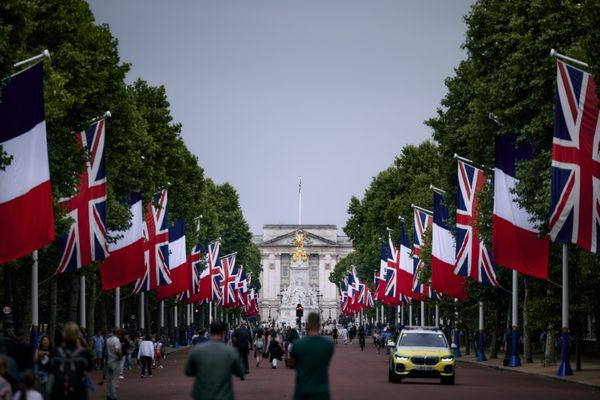
Kiritappu -- which means "cloth of copious fog" -- is the name of a gorgeous wetland in Hamanaka, Hokkaido. And indeed, this fog is a thin veil that softens the colors of everything here -- the vivid greens, the blue sky, the winding rivers.
"In the summertime, hot, humid air is cooled by the cold Oyashio current to create fog," an official at the Kiritappu Wetland Center said.
In the Ainu language, the place is called "kiitafu" and means "place to cut reeds." When the Wa people came over from Honshu, they found kanji characters that fit the name, rather poetically.

During Hokkaido's short summer, yellow ezokanzo (Hemerocallis esculenta) blossoms, white hare's-tail cottongrass (Eriophorum vaginatum) and other flowers cover the wetland. The center's second floor provides a stunning view. Looking through binoculars, you might spot a pair of red-crowned cranes. The wetland, which is also a conduit for migratory birds, is a cradle of life.
Much of the area along the coast and riverbanks has been lost to development. Wetlands that were previously left alone because the cold northern climate was unsuitable for rice farming are now constantly threatened with extinction.
"The wetland was considered unusable land, but one person saw it and said, 'This is heaven,'" said Tokiko Sanzen, 61, who is the director of the Kiritappu Wetland National Trust. Wowed by the beauty of the land, this person -- a young man -- moved here from Tokyo to open a cafe in 1983. In 1986, he and local residents including Sanzen formed the Kiritappu Wetland Fan Club, which later turned into the trust.

Of the wetland's 3,100 hectares, 1,200 hectares on the periphery is privately owned. Much of this had been turned into garbage dumps or was at risk of being filled in for places to dry kombu kelp or for housing.
The fan club started their protection efforts by raising money to rent land. In 2000, the group became a nonprofit organization and started buying land in earnest. The trust is now doing preservation activities for 80 percent of the privately owned land.
"We want to build a bridge between people and nature," Sanzen said.
I stayed at Pension Porch, which faces the rough northern sea. It is run by Katsuya Urita, 61. At 29, Urita decided to quit the family business of kelp gathering and open an inn. While he wanted to go abroad to use his English skills, he also realized the value of the wetland and decided to tell others of its charms. His inn gets many repeat customers, including a woman from Nagoya who has been coming for more than 20 years, and a man from Tokyo who is fascinated with the cottongrass.
Urita is also a nature guide. The next day we explored Kenbokkijima, an uninhabited island visible from the inn. As we approached the island by boat, a seal popped its head above the water. On the island, abandoned homes built by fishermen were overgrown with grass.
The ground was dotted with lovely white and purple flowers. "On Honshu, these grow in high mountain areas," Urita said. After walking for about 20 minutes we reached the island's 55-meter peak, where we ate rice balls wrapped in oboro kombu and looked out over the Pacific Ocean.
In the afternoon we set out into the wetland in canoes. Drifting along, we were buffeted by the wind, but close to the water's surface you could feel the breath of birds and insects.
While words like "development" and "utilization" sound like you are looking down on the area, nature's richness is evident when seen close up. The people here surely understand this.
Origin of 'Lupin the Third'
Monkey Punch, 81, the creator of the comic "Lupin the Third" and other works, was born into a fishing family in Hamanaka. The town has an exhibition facility with reproductions of his original drawings and other materials. It also has a bus decorated with Lupin images. The "Lupin the 3rd Festival" takes place here every year, with nearly 10,000 people coming to this town with a population of 6,000. This year's festival begins on Sept. 16.
Access
Flights from Haneda Airport to Kushiro Airport take 95 minutes. The shuttle bus to Kushiro Station takes 45 minutes. It takes about an hour from Kushiro Station to Chanai Station on the Nemuro Line.
Inquiries: Kiritappu Wetland Center at (0153) 65-2779 or the Hamanaka Commerce, Industry and Tourism Department at (0153) 62-2111
To find out more about Japan's attractions, visit http://the-japan-news.com/news/d&d
Read more from The Japan News at https://japannews.yomiuri.co.jp/







